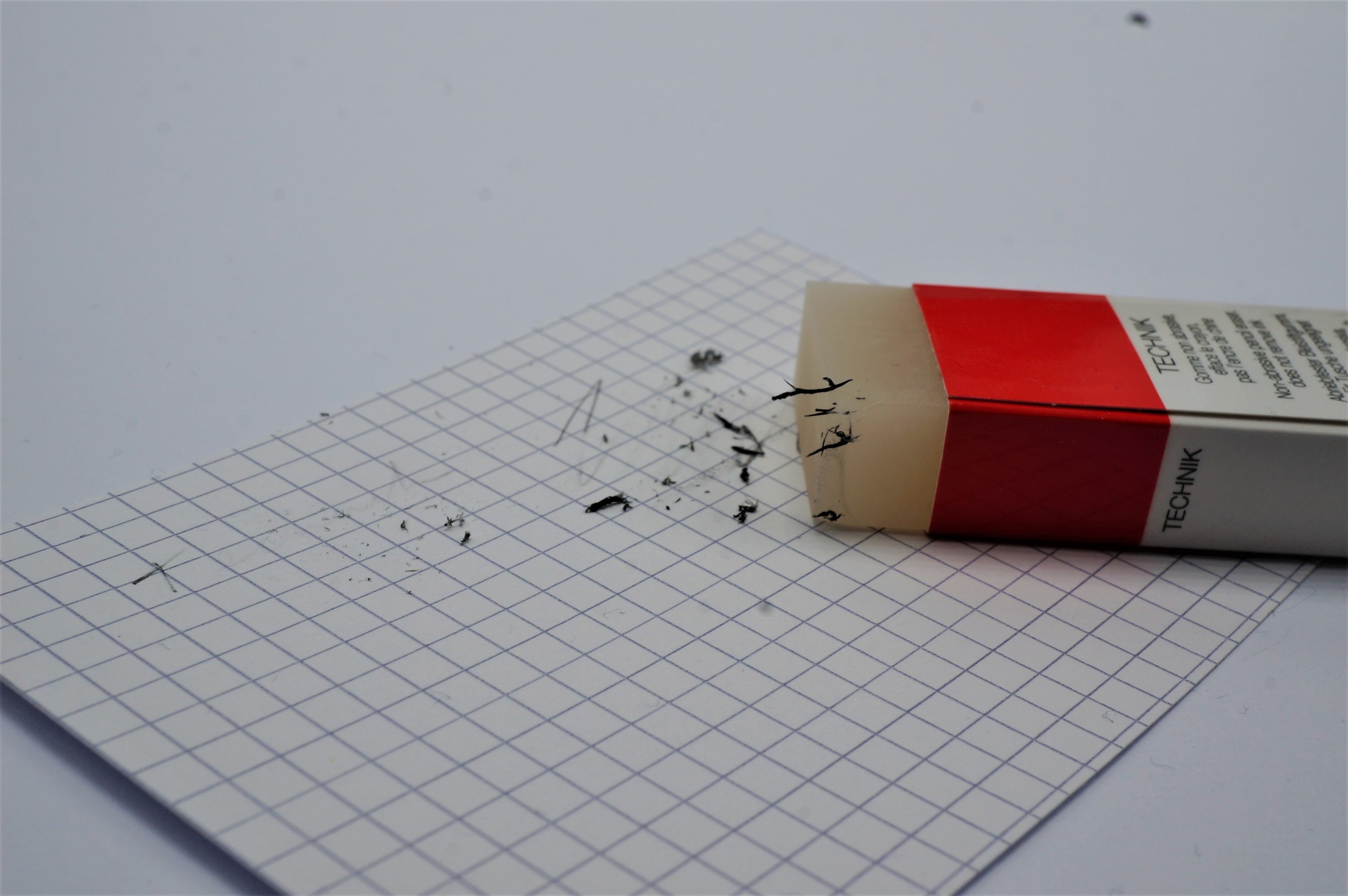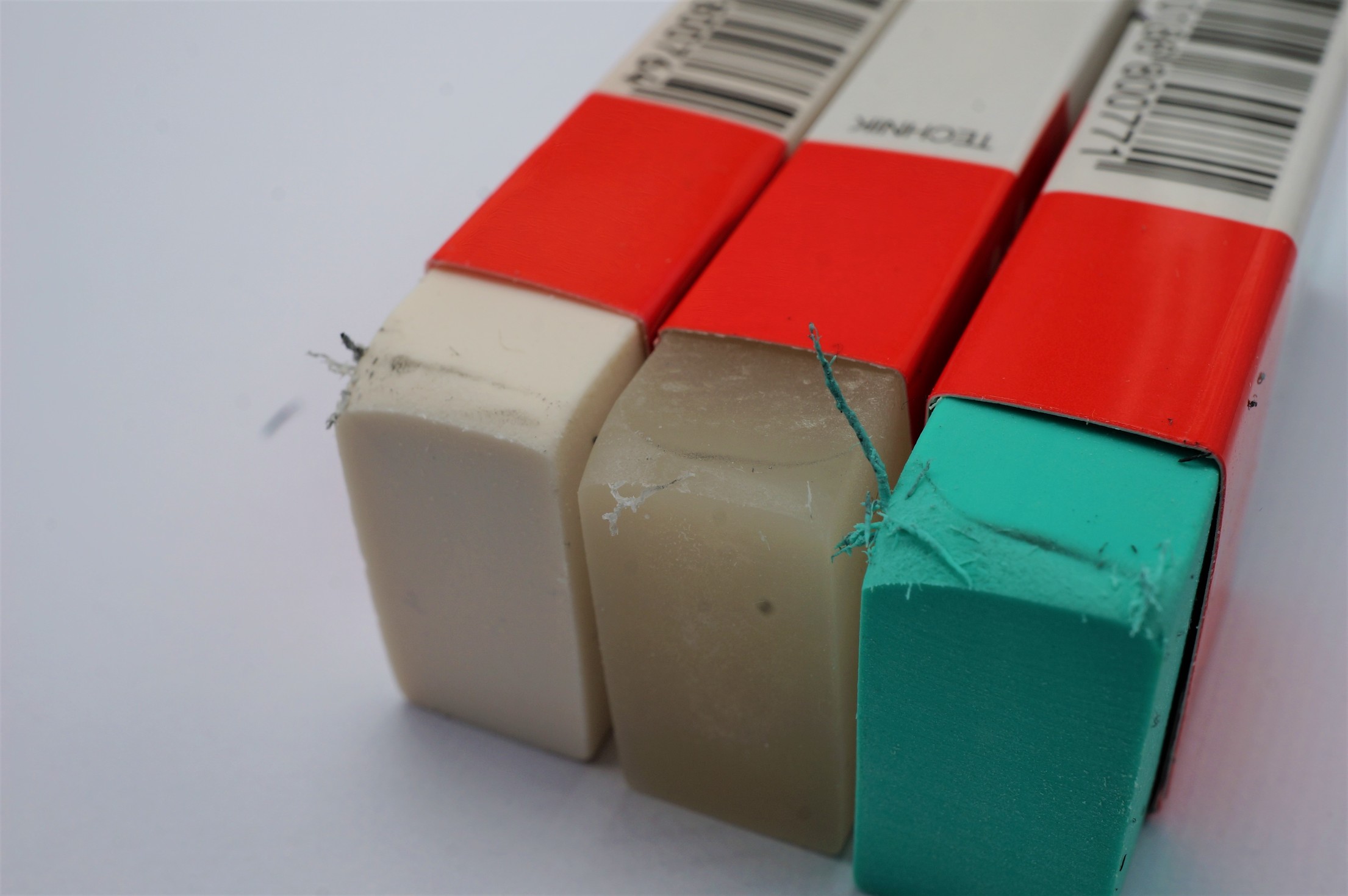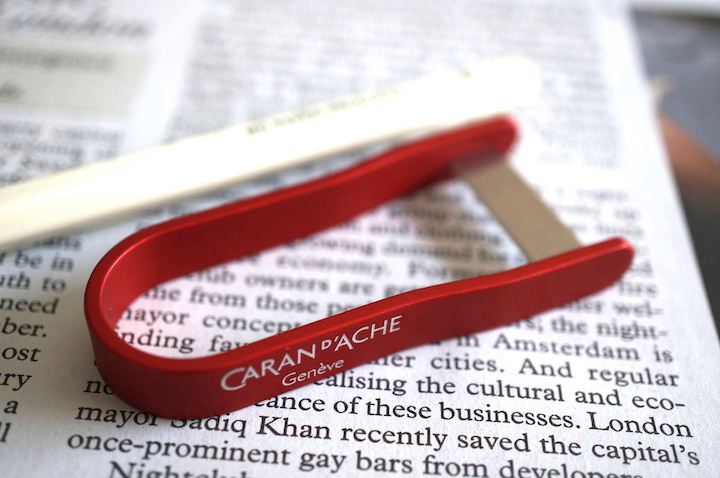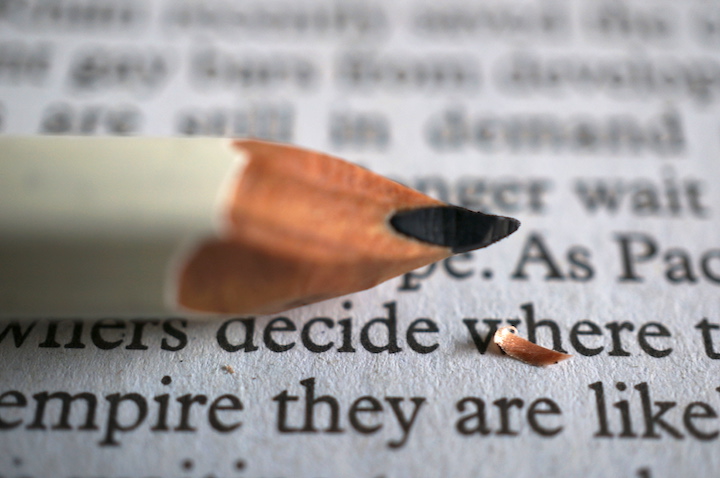In late 2020, Caran d’Ache announced a limited product line featuring the very special colour International Klein Blue.

According to The Secret Life of Color by Kasia St. Clair, the artist Yves Klein loved the intensity of ultramarine pigment, but was disappointed with the paint it created. He worked alongside a chemist to create a resin that exposed more of the pigment’s lustre. (Klein sadly passed away at 34. He patented Klein Blue at age 32.)
Patenting a colour is an interesting notion. Rights to a colour are typically only applicable in a context. Klein’s patent is apparently for his process, not literally for the colour.

The original International Klein Blue is still only made by Klein’s original collaborator and available at the very same art store that served Klein in Paris: Adam Montmartre.
Caran d’Ache announced the adaptation of seven of their products as Klein tributes: At the very high end, Leman fountain and ballpoint pens. And at more accessible price points, a Sharpening Machine, Fixpencil, 849 ballpoint, and two woodcase pencils.

The Fixpencil and Leman Fountain Pen are differentiated in the offering by possessing the ability to write in ultramarine – the Fixpencil has water soluble ultramarine leads, and the Leman a limited edition ultramarine ink. Given the use of Klein’s name and the “®” symbol throughout the advertising and packaging, it is presumed that the Klein pigment isn’t in the ink or lead as this claim isn’t made. All the products share the use of ultramarine surfaces or highlights, and Klein’s signature.
The Fixpencil is an iconic writing instrument, honoured by a Swiss stamp and familiar withing writing culture. It has been mentioned at pencil talk in 2008 and 2017.

This particular model is distinguished by the surface colouring, and comes in a metal case. It ships with a 2mm B grapite lead, and a tube with three ultramarine water soluble leads. One of the leads in my tube arrived broken in half. The blue leads are just a few mm shorter than the graphite lead.
On some very special mulberry bark paper from Hanaduri, I tried the pencils and the blue lead, wet and dry:

I also tried them on writing paper that I regularly use, Rhodia R:

It isn’t really the colour depth or reaction I expected.
I am not happy that there appears to be no refill available. The blue lead seems like a very special accessory, and though the leadholder will continue to function with graphite, this ultramarine lead enhances the association with Klein.
The 849 is another classic. I don’t have a lot to say about it. I think ballpoint cartridges may be receiving small incremental improvements over the years – they may have been pretty awful some years ago, but this one does not skip or dispense lumps of ink. The Caran d’Ache Goliath refill generally has a excellent reputation.
A smear of the blue on HP photocopy paper:

Two pencils have been released. First, the MAXI is a jumbo sized hexagonal pencil with a very thich 4.5mm graphite lead. The pencil is matte and a deep ultramarire – truly striking. The cap is a very slight dome, unfinished.
Second, a set of four pencils simply called “Set of 4 Graphite Pencils”. These are a notch larger than most standard pencils, and possess a 2.5mm HB core. They are about one third coated in ultramarine, and the remainder in clear lacquer. The four pencil box packaging appears to reprise the Exotic Woods packaging.
Both pencils are made of “FSC Mix” cedar. The regular pencil is said to be of 8 plys, and the maxi of 6 plys. Official pencil standards tell us that this refers to the number of pencils produced by the pencil sandwich. Probably not interesting to most consumers, but it piqued my interest.
The MAXI lead seems a little smoother and richer than the regular lead. I wish the MAXI’s lead was also in the regular pencil.
Some Final Impressions
This is a thoughtful and properly licensed commercial product created in association with the estate of a major twentieth century artist. The work involved in acquiring the rights to use Klein’s signature likely rivalled the amount of work involved in production. I salute Caran d’Ache for doing this, and hope there will be more. May I humbly suggest Le Corbusier as someone who might be worthy of similar treatment?

My critiques are minor. The pencils, at their price and given Caran d’Ache’s environmental and social commitments, should be 100% certified, not just “FSC Mix”. FSC certification includes human rights criteria, not just tree ecology, and I think that’s important. The MAXI pencil is probably the standout product to me. If the end was dipped in the same colour, it would be slightly nicer. The regular pencil could have a smoother and darker lead. And the Fixpencil should ship with more than three blue leads, or have refills for sale.
Overall, I feel a delight at seeing this rich deep blue in a time of grey.






























